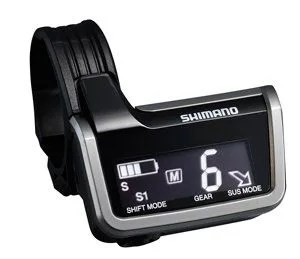In 1990, SunTour gave the world the BEAST: the Browning Electronic AccuShift Transmission, the first electronic shifting system. They threw it on a mountain bike triple, and it worked half the time. Then Mavic jumped in the game, put a few shifters on TT bikes, and those all flopped. Finally, after a decade of testing, Shimano came to the party, successfully launching their Di2. But by then electronic shifting had forgotten its roots. They put the shifters on road bikes, and mountain frames stayed stuck in their wired past — until now. Shimano’s XTR Di2 System brings electronic shifting back to where it all began — and the first now gets the best.
The XTR Di2 System introduces four revolutionary electronic components: the shifter, front and rear derailleurs and the display unit. They’re unprecedented developments for mountain biking, and they also mark monumental leaps for electronic shifting at large. It starts with Shimano’s Synchronized Shift, which controls the front and rear derailleur from ergonomically designed shifters that align with where your thumbs naturally rest. In the system’s defining feature, riders can program the device with patterns that will execute synchronized front and rear shifts from a single shifter. This removes the need to trigger gear changes from both sides of the bar. It keeps your hands where you need them: on the grips.
A rider can program two patterns or shift manually (well, electronically). Any shift can be overridden while riding in a programmed mode, but proper customization should render that option obsolete, freeing up your saddle time for powering through, instead of tinkering with shifts. And unsurprisingly, power happens to be what the XTR does best. The front derailleur mechanism — which, like the road Di2, is the true selling point for electronic shifting — is 25 percent more powerful than Shimano’s premier mechanical shifting. That means that no matter the chain tension, no matter the stress, no matter the timing, a crisp, clean movement happens every shift. Unlike your girlfriend’s labradoodle, the system does exactly what you tell it to, instantaneously.

With that alone, Shimano drops the competition. But they aren’t content with that. They know a positive relationship between rider and electronic shifter is built on strong communication, and that without a clear transfer of information you get confusion, frustration, and dead batteries. So Shimano brought in the Display Unit, a handlebar-mounted hub that reports on shift mode, gear, battery life and, most impressively, electronic-controlled suspension, synced with FOX iCD. By plugging in an E-Tube connection, the display allows riders to monitor climb or descend suspension modes, and the entire system runs on a robust E-Tube infrastructure that keeps the bike’s appearance tight (with integrated wiring) and works seamlessly no matter the inclement conditions.
Shimano tossed in a few extra perks — like the XTR rear derailleur’s narrow profile, which allows for clearance in tight spots and a short-stroke, perfect click lever, allowing for a quick and easy shift — but they land like white chocolate shavings on top of a three-tiered wedding cake. The union of electronic shifting and mountain biking is the real reason to party. And Shimano, in grand fashion, didn’t stop at a quaint reception. They introduced a technology that revolutionizes mountain and trail riding as we know it, and pushes the potential for electronic shifting across all platforms.
